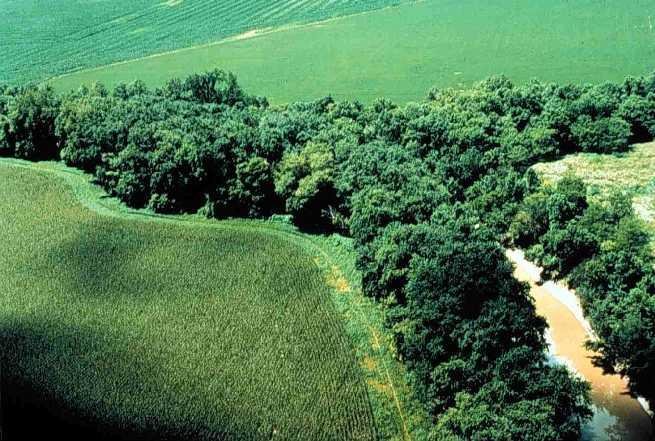Riparian Forest Buffer
Description
Vegetative buffers slow or intercept water flow, trapping sediment and other pollutants such as pesticides and nutrients. Trees and shrubs planted along a waterway (including rivers, streams and drainage ditches) provide wildlife habitat and reduce stream temperatures, providing aquatic benefits.
Planning Considerations
If applicable, will the landowner and farmer share in state and/or federal rental payments and/or cost-share funding?
Who will be responsible for maintaining the riparian buffer?
If the farmer is responsible, how should he/she be compensated? Examples include: percentage of program (e.g. CRP) payments, reduction in rent, longer guaranteed lease term, increase in tillable acres, etc.
Sample Lease Provision: Landowner has established a vegetative buffer(s) ______ feet from the banks of _________ river. Tenant shall not plant, harvest, plow, disc or use fertilizers or pesticides within the vegetative buffer area(s). Fencing shall be erected by Landowner to keep livestock out the buffer area. Tenant shall maintain the vegetative buffer, in accordance with SCD and NRCS standards, by mowing and/ or applying recommended herbicides to control noxious weeds and/or invasive species. To compensate Tenant for the buffer maintenance, Tenant shall receive ___ % of the annual CRP rental payment received by Landowner.
(Optional provision) If a state or federal conservation program inspector finds the buffer has not been properly maintained and as a penalty orders a refund of program payments, Tenant shall be solely responsible for said refund.

